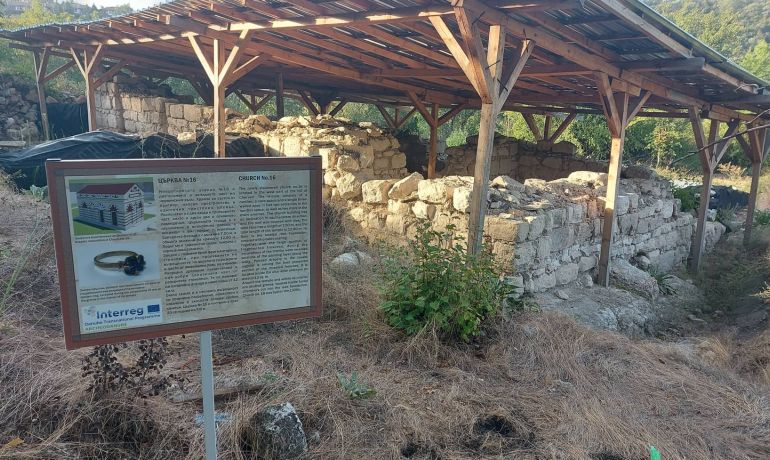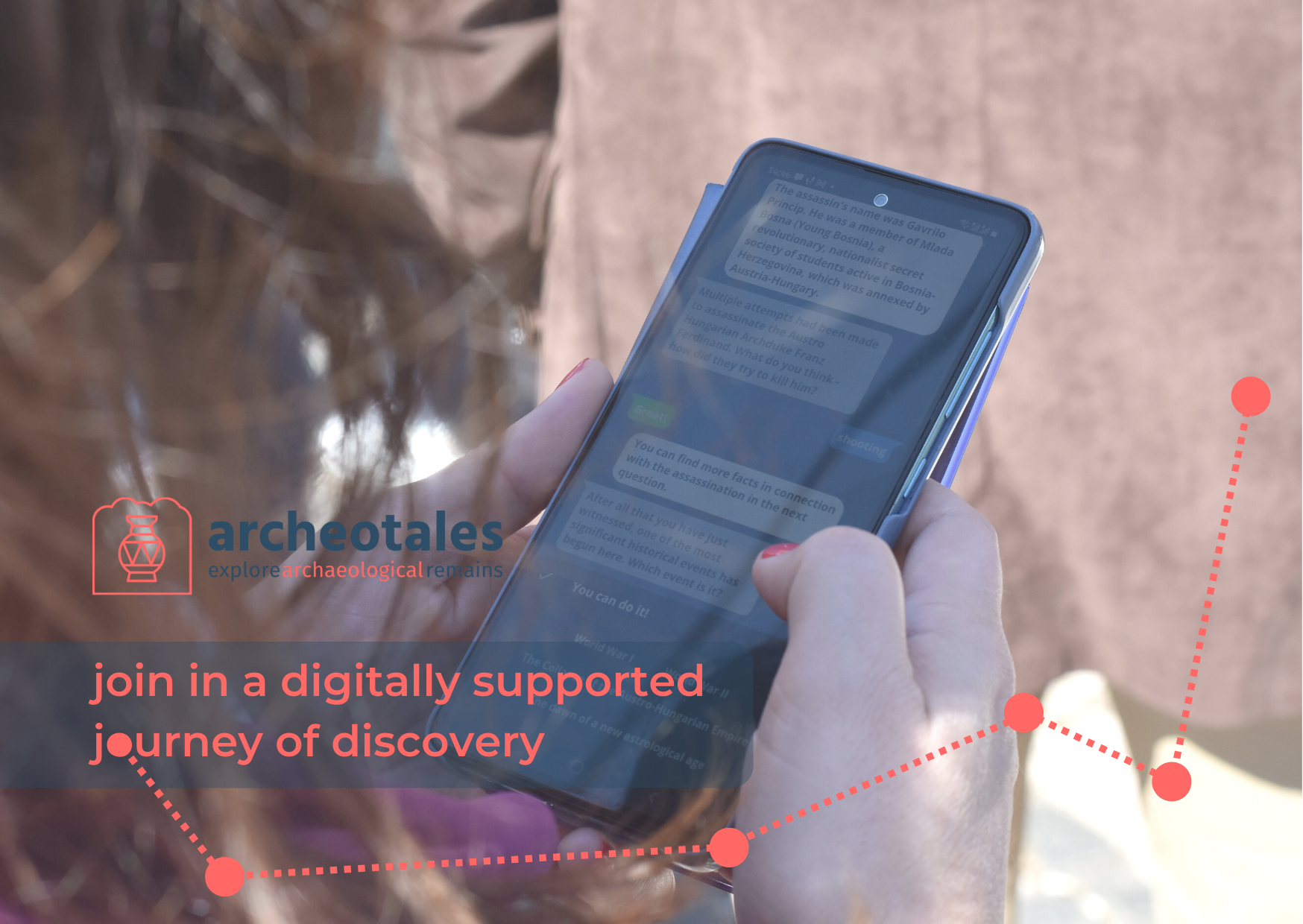Digital glimpses into analogue worlds in Cherven

Communication with modern cultural product users certainly is not an easy task, as it demands that museums adapt and modify their communication policies to the higher expectations of their audiences. The correlation between heritage presentation and the new digital technologies constructing the digital world is growing stronger. To be relevant to the time in which they exist, museums should tell stories and create contents that is interesting, exciting and easily accessible.
The ArcheoTales application that was developed under the ArcheoDanube project enables museum audiences to have fun while learning information concerning the regional mediaeval heritage. Telephone in hand, visitors do not just walk in the streets of the mediaeval town of Cherven; they actively interact with the surrounding archaeological environment through Scavenger Hunts. In the process of overcoming the challenges they meet in the constructed digital world, through the archaeological finds there the visitors learn about the mediaeval Bulgarian fortifications and the life in the mediaeval town. Augmented reality as a possibility to visualise archaeological heritage is a tool that helps the visitor to see what some elements of the archaeological sites actually looked like. There are stereoscopes installed on the hill of the Mediaeval Town of Cherven and on the UNESCO site of the Rock-hewn Churches of Ivanovo. Each of them is focused on a key segment of the site. When the visitor looks in the stereoscope, he/she sees a reconstruction of the Cherven landlord’s castle or the beautiful 14th century frescoes in the rock-hewn churches that in fact are not preserved in their completeness.
Augmented reality as a possibility to visualise archaeological heritage is a tool that helps the visitor to see what some elements of the archaeological sites actually looked like. There are stereoscopes installed on the hill of the Mediaeval Town of Cherven and on the UNESCO site of the Rock-hewn Churches of Ivanovo. Each of them is focused on a key segment of the site. When the visitor looks in the stereoscope, he/she sees a reconstruction of the Cherven landlord’s castle or the beautiful 14th century frescoes in the rock-hewn churches that in fact are not preserved in their completeness. The system of interpretative boards installed by the Rousse Museum in the Mediaeval Town of Cherven and on the site of the Rock-hewn Churches of Ivanovo tell stories about the past in a manner that is easy to understand. Although based on research work, the board texts are free of any special terminology, and the fascinating narration is illustrated by photographs. The interpretative boards produced under the ArcheoDanube project open the knowledge of archaeology to a wide audience and bridge the gap between the institution and its visitors.
The system of interpretative boards installed by the Rousse Museum in the Mediaeval Town of Cherven and on the site of the Rock-hewn Churches of Ivanovo tell stories about the past in a manner that is easy to understand. Although based on research work, the board texts are free of any special terminology, and the fascinating narration is illustrated by photographs. The interpretative boards produced under the ArcheoDanube project open the knowledge of archaeology to a wide audience and bridge the gap between the institution and its visitors. The digital applications and interpretative tools mentioned above are valuable communication vehicles integrated in the Local Archaeological Plan. It marks important points of the transformation of the archaeological site into an archaeological park. A short video promotes the place and the events that include the local communities and build lasting experiences. The ArcheoDanube project makes the Rock-hewn Churches of Ivanovo and the Mediaeval Town of Cherven much better visible and configured in a friendlier way so that they welcome a growing number of visitors.
The digital applications and interpretative tools mentioned above are valuable communication vehicles integrated in the Local Archaeological Plan. It marks important points of the transformation of the archaeological site into an archaeological park. A short video promotes the place and the events that include the local communities and build lasting experiences. The ArcheoDanube project makes the Rock-hewn Churches of Ivanovo and the Mediaeval Town of Cherven much better visible and configured in a friendlier way so that they welcome a growing number of visitors.

